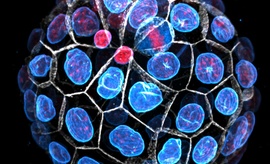How Do Mechanics Guide Fibroblast Activity? Complex Disruptions during Emphysema Shape Cellular Responses and Limit Research
The emphysema death toll has steadily risen over recent decades, causing the disease to become the third most common cause of death worldwide in 2019. Emphysema is currently incurable and could be due to a genetic condition (Alpha-1 antitrypsin deficiency) or exposure to pollutants/irritants, such as cigarette smoke or poorly ventilated cooking fires. Despite the growing burden of emphysema, the mechanisms behind emphysematous pathogenesis and progression are not fully understood by the scientific literature. A key aspect of emphysematous progression is the destruction of the lung parenchyma extracellular matrix (ECM), causing a drastic shift in the mechanical properties of the lung (known as mechanobiology). The mechanical properties of the lung such as the stiffness of the parenchyma (measured as the elastic modulus) and the stretch forces required for inhalation and exhalation are both reduced in emphysema. Fibroblasts function to maintain the structural and mechanical integrity of the lung parenchyma, yet, in the context of emphysema, these fibroblasts appear incapable of repairing the ECM, allowing emphysema to progress. This relationship between the disturbances in the mechanical cues experienced by an emphysematous lung and fibroblast behaviour is constantly overlooked and consequently understudied, thus warranting further research. Interestingly, the failure of current research models to integrate the altered mechanical environment of an emphysematous lung may be limiting our understanding of emphysematous pathogenesis and progression, potentially disrupting the development of novel treatments. This review will focus on the significance of emphysematous lung mechanobiology to fibroblast activity and current research limitations by examining: (1) the impact of mechanical cues on fibroblast activity and the cell cycle, (2) the potential role of mechanical cues in the diminished activity of emphysematous fibroblasts and, finally, (3) the limitations of current emphysematous lung research models and treatments as a result of the overlooked emphysematous mechanical environment.


